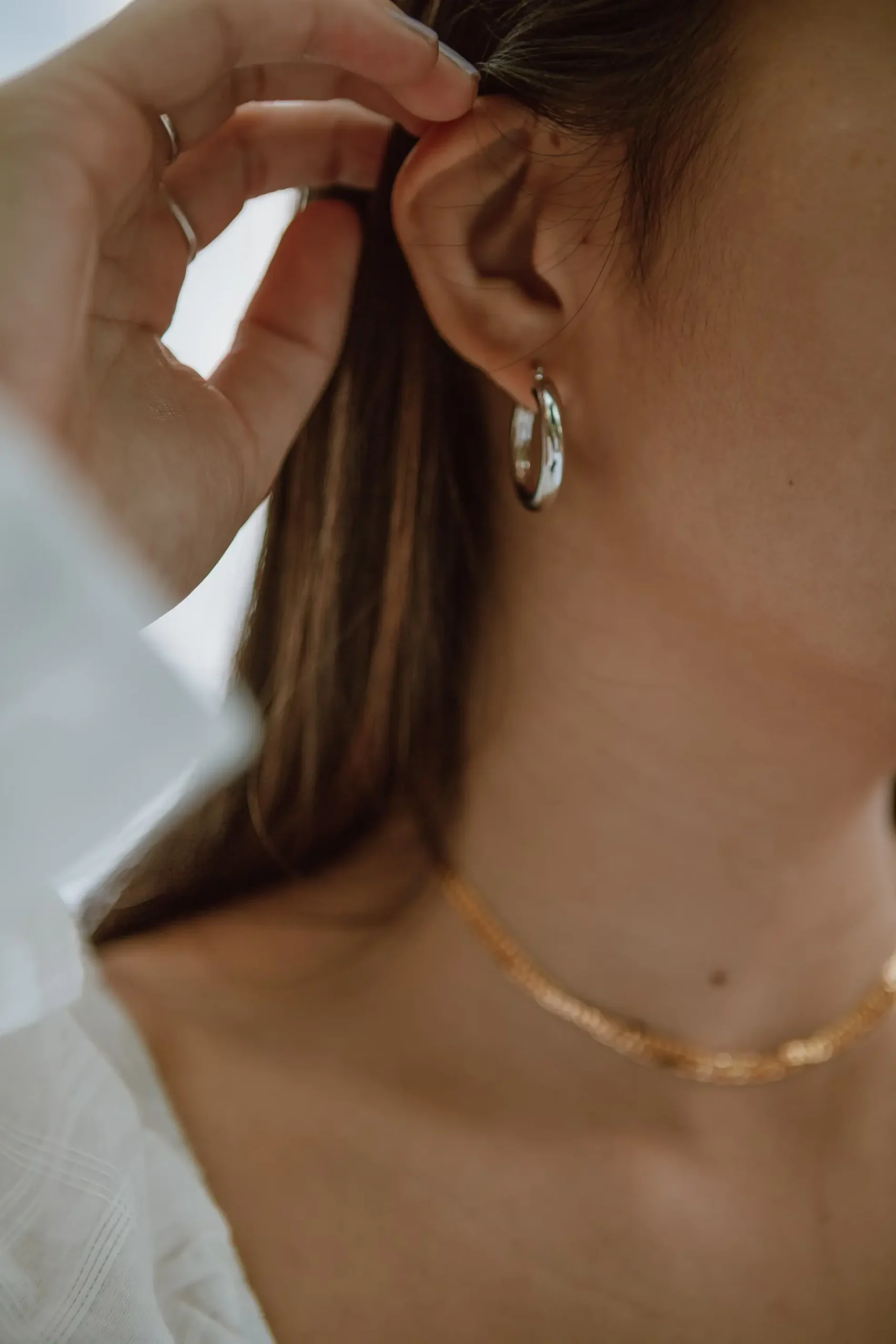Choosing between making your own necklace and buying one can be a tough decision, especially if you’re on a budget. Both options have their pros and cons. To help you decide, we’ll explore the benefits and drawbacks of DIY (do-it-yourself) and buying.
Table of Contents
ToggleThe Joy of DIY
DIY Advantages:
- Customization: One of the biggest perks of DIY is the ability to create something unique. Susannah Tuttle, the founder of Crafting a Green World, says, “DIY allows you to create something unique and exactly what you want, often for less money than buying something similar new” (CraftingAGreenWorld.com). With DIY, you can choose the materials, colors, and design to match your style perfectly.
- Cost-Effective: Making your own necklace can be cheaper than buying one, especially if you already have some materials at home. For example, you can use beads from an old necklace or other jewelry pieces you no longer wear.
- Personal Satisfaction: There’s something special about wearing something you made yourself. Namiko Inoue, co-founder of Namikata, believes, “Imperfection is beauty, madness is art. It’s the journey that matters in the end.” DIY projects can be fulfilling and provide a sense of accomplishment.
DIY Disadvantages:
- Time-Consuming: DIY projects can take a lot of time. Kevin O’Leary, an investor, reminds us that “Time is money. If your time is valuable, sometimes it’s cheaper to buy something than to make it yourself” (Entrepreneur.com). Consider how much time you have before diving into a DIY project.
- Skill Required: Not everyone is a natural crafter. If you’re not confident in your crafting skills, DIY might be frustrating. It can also require specific tools and materials that you may need to purchase, adding to the cost.
The Convenience of Buying
Buying Advantages:
- Time-Saving: Buying a necklace is quick and easy. You can find something you love without spending hours making it. This is especially helpful if you need the necklace for a special occasion or as a gift.
- Quality and Durability: Purchased necklaces, especially from reputable brands, often have higher quality and durability. Katrina Lake, founder of Stitch Fix, points out, “There’s a difference between frugality and cheapness. Frugality is getting the best value for your money. Cheapness is just trying to spend less.” Investing in a well-made necklace can be more cost-effective in the long run.
- Variety: Stores offer a wide variety of styles, materials, and designs. Whether you’re looking for something trendy or timeless, you’re likely to find it in a store.
Buying Disadvantages:
- Cost: Buying a necklace can be more expensive than making one, especially if you’re looking for high-quality materials or designer pieces.
- Less Personal: A store-bought necklace might not have the same personal touch as a DIY piece. It can also be less unique since others might have the same necklace.
Studies and Insights
Consumer Preferences:
A study by Mathur et al. (2013) explored why consumers choose DIY over buying pre-made products. The study found that customization, cost savings, and personal satisfaction were key factors. People enjoy the creative process and the ability to make something that fits their exact preferences.
Cost-Effectiveness:
Jones (2018) conducted a comparative analysis on the cost-effectiveness of DIY projects. The study revealed that while DIY can be cheaper, it often depends on the complexity of the project and the materials required. Simple projects with readily available materials are more likely to be cost-effective.
Psychological Benefits:
Engaging in DIY activities can boost your well-being. According to a study by Lee et al. (2020), DIY projects can reduce stress, improve mood, and increase feelings of accomplishment. The process of creating something with your hands can be therapeutic and rewarding.
Environmental Impact:
Johnson (2017) examined the environmental impact of DIY versus buying manufactured goods. The study found that DIY projects can be more environmentally friendly if they use recycled or sustainable materials. However, the production and disposal of DIY tools and materials can offset these benefits. Buying high-quality, durable products can also be a sustainable choice if they last longer and reduce the need for replacements.
Deciding What’s Best for You
When deciding between DIY and buying, consider these factors:
- Time: Do you have the time to invest in a DIY project? If you’re short on time, buying might be the better option.
- Budget: Are you looking to save money, or are you willing to invest in a high-quality piece? Compare the costs of materials and tools for DIY versus the price of a store-bought necklace.
- Skill Level: Are you comfortable with crafting, or do you find it challenging? If you’re not confident in your skills, buying might save you frustration.
- Personal Preference: Do you enjoy the process of making things, or do you prefer the convenience of buying? Gretchen Rubin, author of “The Happiness Project,” suggests, “Energy follows attention. Focus on what truly sparks joy, and outsource the rest” (GretchenRubin.com). If DIY brings you joy, go for it. If not, buying might be the way to go.
Final Thoughts
Whether you choose to DIY or buy your next necklace, the decision ultimately depends on your personal preferences, time, and budget. Both options have their unique advantages and potential drawbacks.
Remember, there’s no right or wrong choice. As Mark Cuban, an investor, encourages, “Don’t be afraid to go out on a limb. That’s where all the fruit is.” Trying new things can lead to wonderful discoveries and satisfying experiences.
In conclusion, weigh the pros and cons of DIY versus buying, consider your circumstances, and choose the option that best fits your needs and lifestyle. Whether you end up with a handcrafted piece or a store-bought treasure, you’ll have a beautiful necklace to enjoy.




